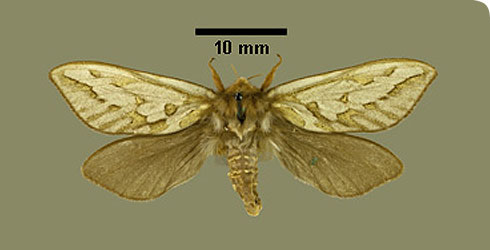Why does this variation occur?
The reasons for the extraordinary variation seen for Hepialus humuli thulensis males are not fully understood. But it seems likely that at least 3 different evolutionary processes are involved
Firstly, many species of moths and butterflies with a wide geographical distribution tend to be darker in the northern part of their range.
This trend has generally been explained as adaptations to improve either:
- heat absorption in a colder climate (butterflies)
- camouflage when resting against a dark background during the longer hours of daylight in northern summers (moths)
In ghost moths several factors make this a less likely explanation, not least the fact that males in northern Scandinavia, at latitudes well north of the populations on the Faroe Islands, do not display this polymorphism and are similar to more southern males.
Two other factors have been linked to the evolution and maintenance of the male polymorphism. Both have to do with visibility of the males during their courtship flight:
- Observations have demonstrated that both female moths are attracted to the individual male by visual stimulus (once they have been lured to the hovering group by scent).
- Flocks of hovering males in courtship flight are often preyed upon by birds, especially terns and gulls.
These two factors clearly pull the evolution of male colour in different directions:
- If silvery white males are preferred by females (perhaps simply because they are more visible), they are likely to produce much more offspring, which would also be silvery white.
- If silvery white males are more visible to predators, they are likely to be eaten much more frequently than darker males. The latter would then produce more offspring, which would be more polymorphic.
In much of Hepialus humuli’s range (continental Europe and mainland Britain) predation by birds is likely to be a less important factor than it is in the Shetlands and Faroe Islands. Indeed a recent study from the Faroe Islands has shown that there is a general correlation between bird predation and the frequency of darker males on a given site.
